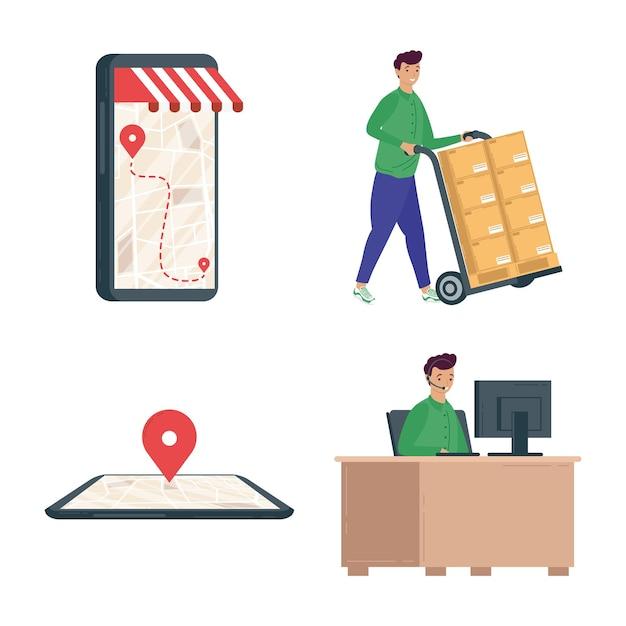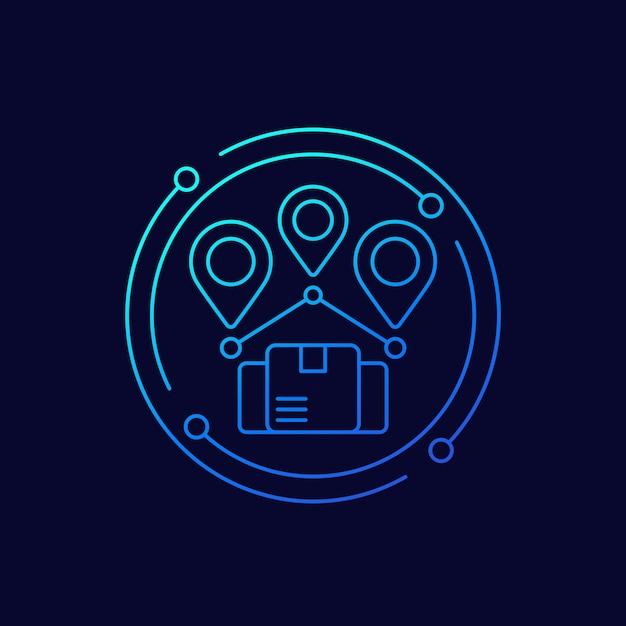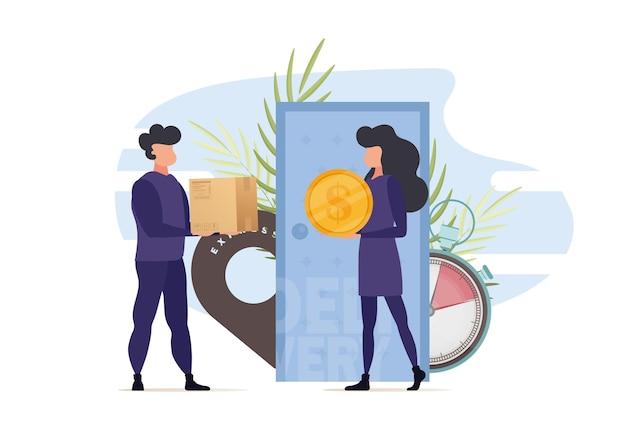E-commerce has come a long way since its inception. Customers now have a wide array of products to choose from, regardless of where they are in the world. The surge of cross-border delivery has made it possible for merchants to reach a global market, making it easy for customers to purchase goods beyond their local borders. Yet, cross-border logistics can be a daunting task for any merchant looking to expand globally. Luckily, localized fulfillment has become a popular solution for these logistics issues.
In this blog post, we will explore the concept of localized fulfillment and how it has revolutionized the cross-border logistics industry. We will answer questions like “What is localized fulfillment?” and “What are the 3 approaches to order fulfillment?” We will also delve into the intricacies of cross-border logistics and provide clarity on the question, “What do you mean by fulfillment?”
So, buckle up and let’s take a closer look at localized fulfillment and see how it can help businesses streamline their cross-border logistics.
What is Localized Fulfillment
As e-commerce continues to grow, meeting customer expectations has become more challenging. One way to improve the customer experience is to implement localized fulfillment. This means stocking inventory in multiple locations closer to the customer, reducing shipping times and costs.
Benefits of Localized Fulfillment
Localized fulfillment offers several benefits to retailers, including:
Faster Shipping
By having inventory located closer to customers, retailers can significantly reduce shipping times. This results in happier customers, higher conversion rates, and increased loyalty.
Lower Shipping Costs
Shipping costs are a significant expense for retailers. By shipping from the closest warehouse, retailers can save on shipping costs, which can help increase profitability.
Better Inventory Management
With inventory spread across multiple locations, retailers can better manage stock levels, reduce the risk of stockouts, and improve overall inventory accuracy.
Improved Customer Experience
Fast shipping, low-cost shipping, and accurate inventory levels all lead to a better customer experience. By meeting customer expectations, businesses can improve customer satisfaction, increase loyalty, and even generate positive reviews and referrals.
How to Implement Localized Fulfillment
Implementing localized fulfillment requires careful planning and execution. Retailers must consider factors such as the number and location of warehouses, inventory levels across all locations, and shipping zones.
Warehouse Locations
To implement localized fulfillment, retailers need to stock inventory in multiple locations across different regions. The number and location of these warehouses will depend on the retailer’s target customers and shipping zones.
Inventory Levels
Having the right inventory levels across all locations is a critical factor for successful localized fulfillment. Retailers must ensure that each warehouse has enough inventory to meet customer demand, while also avoiding overstocking.
Shipping Zones
Retailers must also consider shipping zones when implementing localized fulfillment. By strategically placing warehouses in specific regions, retailers can reduce shipping distances and lower shipping costs.
Localized fulfillment is a strategy that retailers can use to meet customer expectations, reduce shipping times and costs, and improve overall inventory management. By carefully planning and executing a localized fulfillment strategy, businesses can improve the customer experience, increase loyalty, and generate positive reviews and referrals.
Cross-Border Delivery: Ensuring Timely and Secure Delivery of Products
Localized fulfillment is the key to global success for any business today. While it offers several benefits, including better customer experiences and faster delivery times, cross-border delivery can often pose a significant challenge for businesses. Shipping products across international borders requires careful planning, attention to detail, and a thorough understanding of local regulations.
Understanding the Challenges of Cross-Border Delivery
Cross-border delivery can be a complex and time-consuming process. Some of the common challenges businesses face while shipping products across borders include:
- Different shipping regulations in each country, including import and export restrictions, taxes, and duties.
- Language barriers, which can make it challenging to communicate effectively with customers and local authorities.
- Time zone differences, which can make it difficult to provide prompt customer service and support.
- Complex documentation requirements, including customs declarations, commercial invoices, and cargo manifests.
- Lack of visibility and tracking, which can make it challenging to keep track of products throughout the shipping process.
How to Overcome the Challenges of Cross-Border Delivery
To overcome these challenges, businesses need to adopt a localized fulfillment strategy that includes the following:
- Partnering with an experienced logistics provider that has a deep understanding of local regulations and can navigate the complexities of cross-border shipping.
- Offering multiple shipping options, including express shipping and standard shipping, to meet the needs of different customers.
- Providing clear and concise shipping information on your website and in your order confirmation emails to ensure customers have all the details they need.
- Using advanced tracking and management software to keep track of products throughout the shipping process and provide real-time updates to customers.
- Ensuring that all relevant documentation is complete and accurate, including customs declarations, commercial invoices, and cargo manifests.
By adopting a localized fulfillment strategy that addresses these challenges, businesses can ensure timely and secure delivery of products across international borders. This, in turn, can help businesses build strong relationships with customers, enhance their reputation, and drive long-term growth and success.
What is Localized Fulfillment
If you’re new to the world of eCommerce, you may be wondering what localized fulfillment is. At its core, localized fulfillment refers to the process of fulfilling orders from a warehouse that’s closest to the end customer, rather than a centralized warehouse that could be hundreds or thousands of miles away.
The Old Way vs. The New Way
In the early days of eCommerce, most businesses would use a single, centralized fulfillment center to store and ship all of their products. While this approach was relatively simple and cost-effective, it wasn’t always the best option for customers.
Imagine you live in California, and you order a product from an eCommerce store that’s based in New York. Under the old way of doing things, your product would have to be shipped all the way across the country, which could take several days or even weeks.
The Benefits of Localized Fulfillment
Localized fulfillment offers several benefits for both businesses and customers. For businesses, it can help to reduce shipping costs and times, as products are being shipped from warehouses that are closer to customers. It can also help to improve inventory management, as products can be stored in multiple locations.
For customers, localized fulfillment can help to ensure that products are delivered quickly and reliably. This can lead to increased customer satisfaction and loyalty. Additionally, by storing products in multiple locations, businesses can reduce the likelihood of stockouts or backorders, ensuring that products are always available for purchase.
Choosing a Localized Fulfillment Provider
If you’re interested in implementing localized fulfillment for your eCommerce business, you’ll need to work with a logistics provider that can help you to set up and manage multiple fulfillment centers. Look for a provider that offers real-time inventory management, automated order routing, and fast, reliable shipping options.
By partnering with the right logistics provider, you can take advantage of the many benefits of localized fulfillment and provide your customers with an exceptional shopping experience.
What is Cross Border Logistics
Cross-border logistics is the process of moving goods across borders. It involves arranging for transport, coordinating with customs officials and complying with all necessary regulations. Cross-border logistics is necessary for companies that want to source materials or goods from abroad, or want to sell their products to customers in other countries.
Why is Cross Border Logistics Important
Cross-border logistics is important for businesses that want to expand their markets, reduce costs or access new sources of raw materials. By taking advantage of the lower costs of goods or labour in other countries, companies can enhance their competitiveness and increase profits. Cross-border logistics also allows businesses to tap into new markets and cultures, offering them opportunities to learn about other people’s customs, tastes and preferences.
The Challenges of Cross Border Logistics
Cross-border logistics can present a number of challenges, including language barriers, exchange rate fluctuations, customs procedures, and cultural differences. To navigate these challenges, businesses must be able to plan effectively, communicate clearly and adapt to unexpected situations.
Strategies for Successful Cross Border Logistics
To ensure successful cross-border logistics, companies must plan meticulously and communicate effectively. This includes developing a comprehensive logistics plan, identifying potential risks and contingencies, and ensuring that all customs regulations are met. Other key strategies include building strong relationships with local suppliers, developing effective communication channels and leveraging technology to automate processes and reduce manual errors.
In conclusion, cross-border logistics is a critical element of international trade. By navigating the challenges and leveraging the opportunities presented by cross-border logistics, businesses can increase their profitability, expand their markets and develop stronger relationships with customers around the world.
What is fulfillment
Fulfillment is the process of receiving, processing, and delivering orders to customers. Simply put, it’s what happens in the background after a customer clicks the “buy now” button on your website.
Receiving Orders
The first step in the fulfillment process is receiving the order. Whether your business is selling products or services, you need to have a system in place to receive and process incoming orders. This means that when a customer places their order, you need to have a way to capture that information and ensure that you can fulfill it.
Processing Orders
Once you’ve received an order, the next step is to process it. This involves picking the products from your inventory, packaging them, and preparing them for shipment. In many cases, this can be a labor-intensive process, but it’s a critical part of ensuring that your customers receive their orders in a timely and satisfactory manner.
Delivering Orders
The final step in the fulfillment process is delivering the order to the customer. This involves shipping the order to the customer’s address or delivering the service that was purchased. Depending on your business and the products or services you offer, this could be a simple process or a more complicated one.
In conclusion, fulfillment is an essential part of any business that sells goods or services online. It’s the process of receiving, processing, and delivering orders to customers, and it’s critical for ensuring that your customers receive their orders on time and in good condition. By understanding the fulfillment process and optimizing it for your business, you can provide your customers with a better experience and ultimately grow your business.
What are the 3 Approaches to Order Fulfillment
If you run an eCommerce store, order fulfillment is critical to your business success. It refers to the process of receiving, processing, and delivering orders to customers. In this subsection, we will discuss the three approaches to order fulfillment that businesses can adopt to streamline their backend operations.
In-House Order Fulfillment
This approach involves managing order fulfillment in-house, where businesses take on the responsibilities of the entire process internally. This requires a significant investment in infrastructure, from buying or leasing warehouses to hiring a team for picking, packing, and shipping the orders.
In-house order fulfillment offers complete control over the process, providing businesses with the flexibility to customize their processes, and ensuring high-quality customer experiences while saving costs in the long run.
Dropshipping
Dropshipping is a popular approach to order fulfillment that eCommerce businesses can adopt. This approach eliminates the need for businesses to have inventory or manage the packaging and shipping of their products.
With the dropshipping model, businesses partner with a third-party wholesaler who handles the order fulfillment process on their behalf. The wholesaler picks, packages, and ships orders to the customers, while the business only generates and submits orders to the dropshipper.
While dropshipping may seem like an attractive option for businesses, it comes with its own set of challenges, including little control over the supply chain, product quality, and the possibility of out-of-stock items.
Third-Party Fulfillment
Third-party fulfillment (TPF) is a hybrid approach that offers a compromise between the in-house and dropshipping methods. This involves outsourcing the order fulfillment process to a third-party logistics provider (3PL), who processes the orders on behalf of the business.
With TPF, businesses can leverage the resources of a 3PL provider, including warehouses, tools, and expertise, to streamline their order fulfillment process. This allows them to focus on growing their business, while the 3PL provider handles all aspects of order fulfillment and shipping.
In conclusion, there are three approaches to order fulfillment that businesses can adopt – in-house, dropshipping, and third-party fulfillment. Each approach has its own advantages and disadvantages, and businesses should choose the approach that best aligns with their goals, resources, and customers’ expectations.



